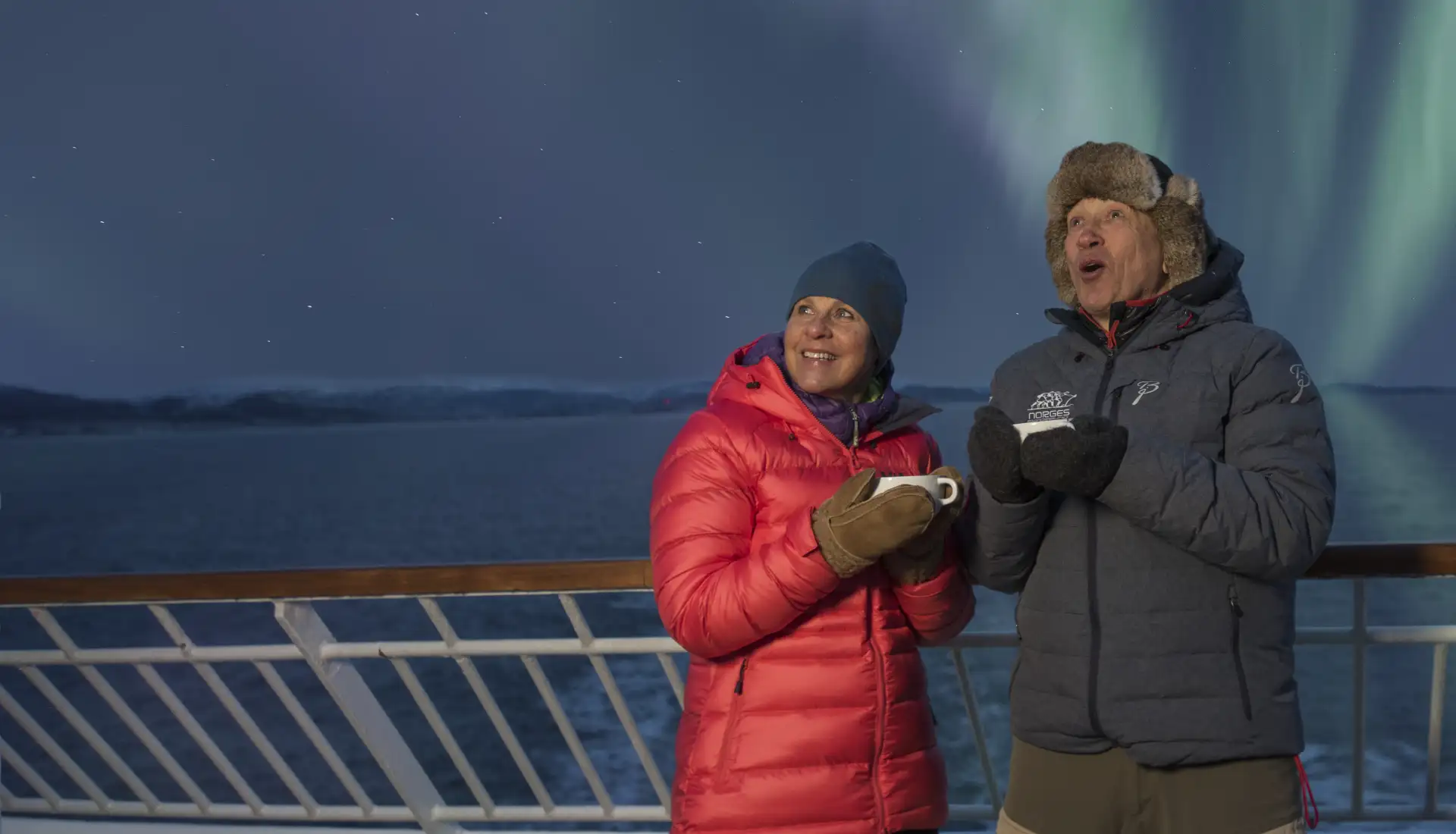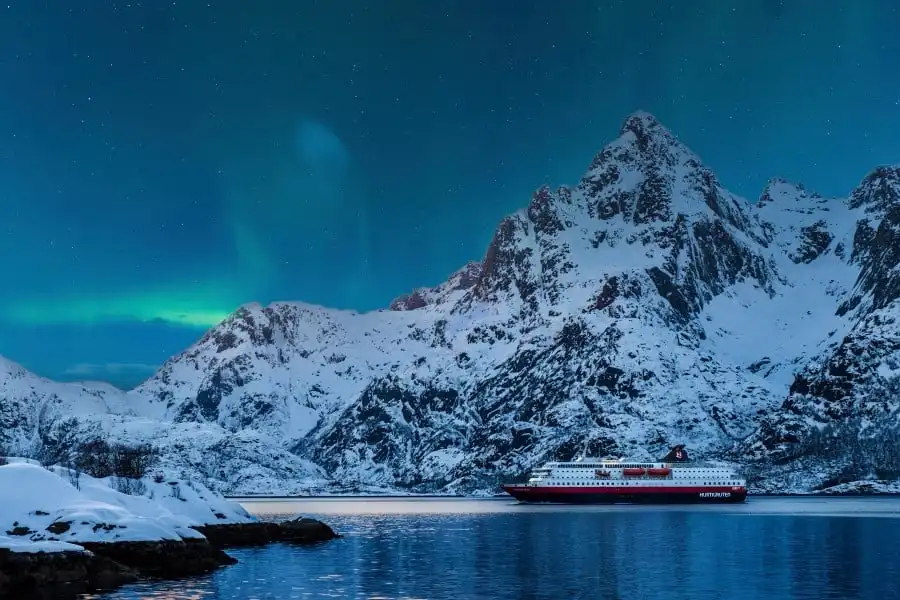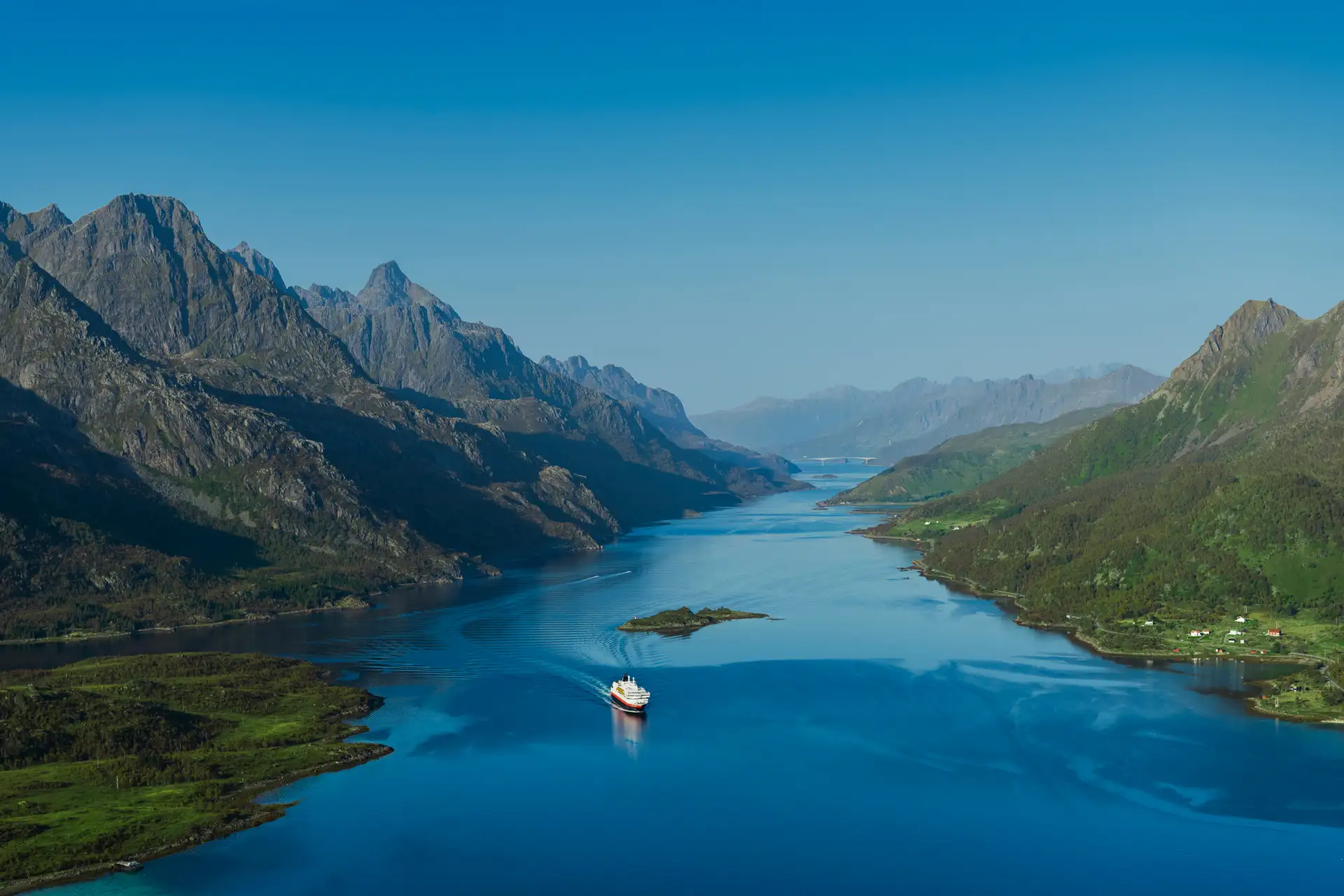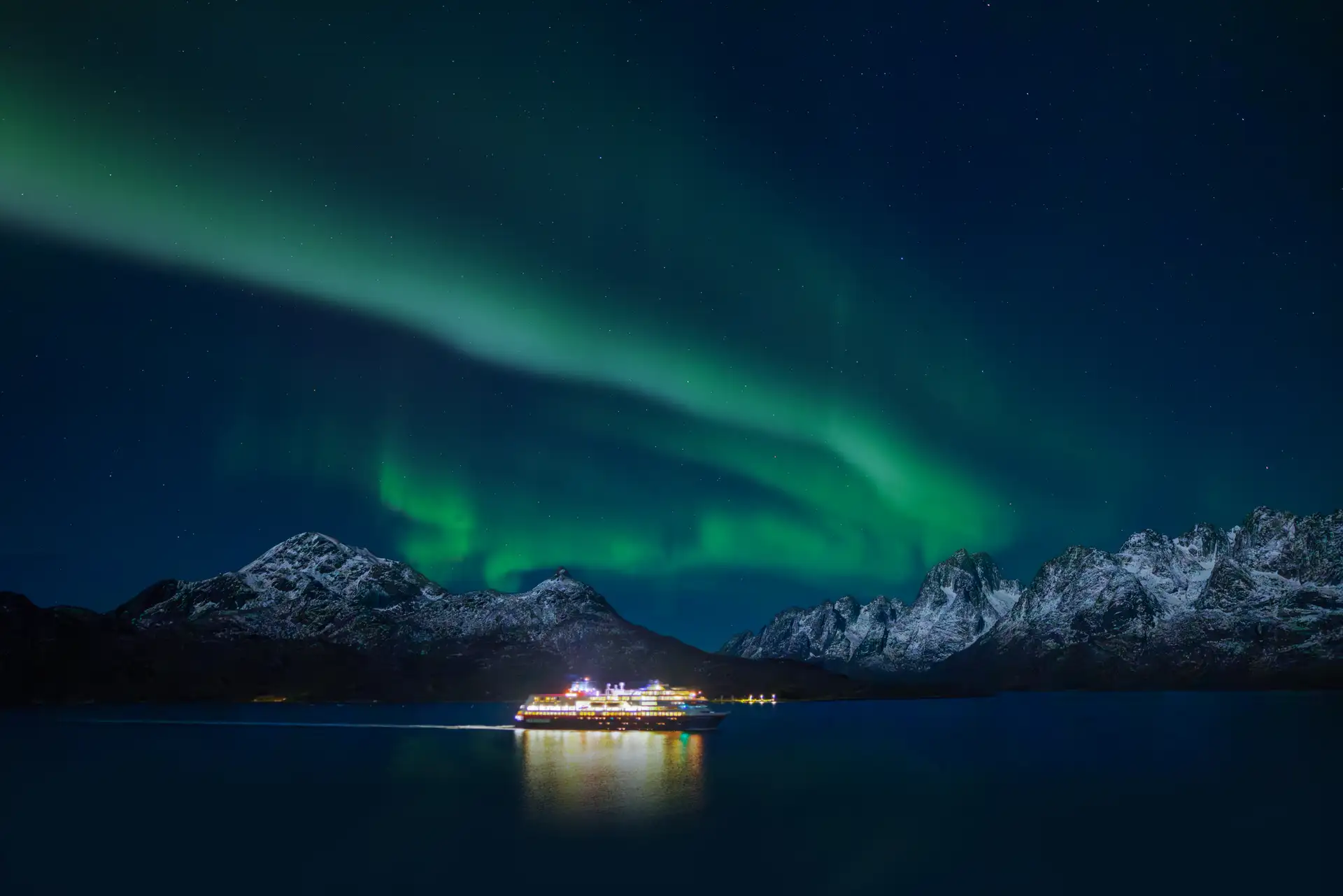The Northern Lights
For 130 years, we’ve sailed beneath nature’s mesmerising lightshow in northern Norway. Discover everything you need to know about the aurora borealis from the experts.
The best time to see the Northern Lights? Now!
Scientists are confident that the Maximum of the current solar cycle arrived in late 2024. That means we're now in the period around the Maximum, during which sunspot numbers continue to remain high. This results in more powerful auroras, created by geomagnetic storms.
This means that the two upcoming aurora-chasing seasons, between September and March of 2025-26 and 2026-27, will benefit from elevated activity, even as the solar cycle progresses steadily towards the next minimum around 2031
And with our Northern Lights Promise, you can book a Northern Lights cruise confidently, knowing we’re committed to maximising your chances of witnessing the world's greatest light show.


The best places to see the Northern Lights
Northern Norway sits directly underneath the aurora oval, a ring around the North Pole where aurora activity is most powerful. This makes our entire northern coast prime viewing territory.
We've compiled years of experience into a guide to help you get the most out of your aurora chasing with us, including times and locations where you're most likely to spot the lights, and how to best observe their magic if they do appear.
What causes the Northern Lights?
Put simply, the Northern Lights appear when solar particles collide with the Earth’s magnetic field. As the incoming particles collide with atoms and molecules of oxygen and nitrogen in the Earth’s upper atmosphere, they excite them to produce light – the light of the aurora.
We asked scientists and astronomers to explain the Northern Lights in a way we could understand. Read on to find out more about solar activity and magnetic fields, the different types of auroras, and why they come in different colours.

The best way to see the Northern Lights
A Hurtigruten voyage along Norway’s coast is one of the best ways to see a life-defining display of the aurora borealis. Here are six reasons why you should embark on a Northern Lights holiday with us.

1. The Auroral Oval
Our ships sail above the Arctic Circle and directly beneath the Auroral Oval, an area of consistently active displays.

2. Multiple sightings
Travelling to different parts of the Norwegian coast on the ship increases your chances of seeing the aurora not just once but multiple times.

3. Mobile observatory
The advantage of being at sea is that we can quickly sail clear of cloud cover that might be blocking your view of a Northern Lights display.

4. Aurora announcements
You don't need to worry about checking the aurora forecast. Our ship’s bridge officers are always scanning the skies and horizon, and will let you know as soon as the lights appear.

5. The best views
Being at sea avoids the air and light pollution on land, both of which can dull the colours and vibrancy of a Northern Lights spectacle.

6. A free voyage
If you sail with us during the Northern Lights season for more than 11 days and don’t see the aurora appear at least once, we promise you a free voyage to try again.

Our Northern Lights Promise
Since 2014, we have promised our guests a free voyage if Norway’s Northern Lights don’t occur on our voyages of 11 days or more between autumn and spring.
We've even extended our promise, starting it from 20 September instead of October, and continuing it until the end of March.
Our Northern Lights cruises

Legends of the Lights
Long before we understood the science behind the aurora, the Northern Lights were wrapped up in myths and legends that still fuel our imaginations today.
The Lights appear in folklore across the world, as omens both revered and feared. These strange green, red, and purple lights dancing across the night skies have inspired some of the most captivating stories on Earth. Once you’ve seen them, it’s easy to understand why.
How do I photograph the Northern Lights?
When you see the Northern Lights, it’s only natural to want to capture the spectacle. But photographing their elusive beauty isn’t as simple as point-and-shoot.
To help you, we asked photography experts for their tried and trusted tips on everything from how to photograph the Northern Lights from a ship to shooting the aurora with a smartphone.

Voices of the Lights
We talked to people who live and breathe the Northern Lights about the dreams and desires that drive them. These are their stories.

The Chief Aurora Chaser: Tom Kerss
Astronomer Tom Kerss tells us why he can’t get enough of the Northern Lights in Norway.

Sage of the Northern Lights: Dr John Mason
Physicist and astronomer Dr John Mason has the answers to all of our questions about the Northern Lights, “truly nature's greatest light show”.

Chasing the aurora as a solo traveller
For KrisTina Kramer, few things in life give her as much of a thrill as a Northern Lights chase with us along the Norwegian coast.


